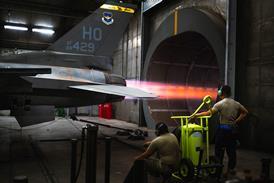Reusable Russian spacecraft to be evaluated by space agency for updated exploration programme
A two-year, €50 million ($60.5 million) evaluation of Russia’s proposed Kliper six-crew reusable spacecraft is now part of the European Space Agency’s updated Aurora exploration programme. If approved by this December’s ESA ministerial meeting, the study will not be overseen by ESA’s launchers directorate, which is developing an Ariane 5 replacement by 2020.

The Kliper work scope will include ESA member states seeking “system-level” contributions to the vehicle’s development, not just providing components. As a result, the agency’s Kliper programme has been placed within Aurora, which last November was moved to ESA’s directorate of human spaceflight, microgravity and exploration.
Russia’s timetable for development of the Kliper may present problems for ESA involvement. “The Russians have already started the Kliper work. They have a very aggressive development schedule with a target date of 2011 [for its maiden flight],” says Aurora programme manager Bruno Gardini, who will attend a NASA meeting on exploration in November where he will propose further co-operation.
The new Aurora programme’s core activities still include technology studies for a Mars sample return mission, exploration architecture design and analysis of future lunar surface research. But there are two new technology demonstration missions that will flight test an internationally compatible docking system and life support technology. They will cost up to €150 million from 2006 to 2008.
While the programme still has as its main focus the €600 million ExoMars rover mission, this too has changed. It has been delayed by two years to launch in 2011, there is no orbiter acting as a communications relay and the descent module will have a geophysical and environmental package (GEP) of instruments. Designed to last for years, the GEP could become part of an international network of static sensor stations. NASA is being offered instrument space on the rover and the GEP in return for use of its spacecraft orbiting Mars for ExoMars communication.
ROB COPPINGER/LONDON
Source: Flight International























